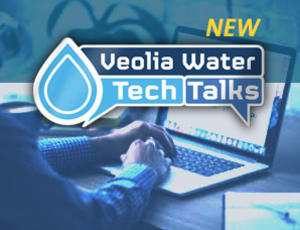The extraction of oil and gas is intrinsically associated with the co-production of water emerging from the underground formation. When the mixture comes through the well and above ground, it is separated into oil, gas, and produced water.
As a well ages and becomes more mature, produced water volumes increase, and oil becomes more difficult to remove, which prompts the use of enhanced recovery techniques such as using energy from water flooding or steam injection into the reservoirs to help force the oil out to the surface. Over time, both formation and injected water eventually make their way to the top requiring economical and environmentally friendly methods of produced water treatment so it can be reused or disposed of safely.
For oil and gas developers and operators, the challenge of finding hydrocarbons is only the first one as the increasing requirements of compliance with environmental legislation are coupled with the need to improve efficiency, reliability and achieve maximum operating performance.
Produced water is not only hot and rich in dispersed, emulsified, and dissolved oil. Produced water has high concentrations of suspended silica (e.g., sand, silt) and high salinity caused by the presence of dissolved ions of sodium, potassium, magnesium, chloride, and sulfate. Additionally, produced water can also frequently contain naturally occurring radioactive elements such as radium.
Because the composition of produced water is so complex and varies so much, today’s growing challenges in heavy crude oil and natural bitumen (oil sands) production, such as those found in Canada, the United States, China, the Middle East, and South America are related to produced water and the selection of the most suitable treatment technologies that achieve consistent effluent quality levels determined by the final purpose of the water use.
1. Injection of produced water into disposal wells
Deep well disposal consists of drilling other wells where the right conditions exist for injection and disposal of the produced water. To prevent new groundwater contamination and protect this reservoir and prevent its damage, adequate treatment is required. Many contaminants, including organic waste, bacteria, scale, clay, rust, petroleum, etc., can plug off the reservoir during water injection.
2. Recycle and reuse of produced water back into the same well
The reinjection of produced water to maintain reservoir pressure and hydraulically drive oil toward a producing well accomplishes both main purposes. Water flooding or steam injection keeps the well under pressure, enhancing oil production and minimizing freshwater needs. Because this water will filter through the soils and rock structure, it must be treated to remove oil and to scale minerals so that plugging of the formation does not occur.
3. Release the produced water for surface discharge
This option, which could produce water for beneficial reuse such as irrigation, requires further treatment and management to comply with strict regulations that restrict the type and amount of pollutants that can be safely released to the environment without direct risk towards ecology and human health.
The different possibilities of using produced water determine the spectrum of treatment and development technologies as well as resources for produced water.
Overall, the treatment line depends on a broad range of parameters:
- Inlet data, now and in the future
- Outlet requirements, now and in the future
- Space availability
- Wellhead pressure
- Cost of operation
Produced water treatment processes including Streamliner® cyclonic separation, AutoFlot® enhanced flotation, PowerClean® walnut shell filtration, and other softening and silica removal unit operations, can be provided as part of a system that can even be followed by reverse osmosis membranes, as in Veolia's OPUS® technology.
Typically, onshore produced water is pumped to an AutoFlot® induced gas flotation (IGF) system that removes 90-95% of the oil from the solution as well as suspended solids. The IGF unit induces gas or air bubbles into solution and together with the proper chemical dispersants or reverse breakers effectively reduces the oil content to low levels.
Oil water polishing can be accomplished by media adsorbents such as PowerClean™ nutshell filtration technology that achieves oil levels usually below 3 ppm and suspended solids removal of greater than 98%. The nutshell media acts as an adsorbent and is reused after being scrubbed to remove the adsorbed oil droplets.
When enhanced oil recovery requires the use of steam injection, produced water is typically softened by passing through a solids-contact clarifier to separate sludge and prevent scaling when reaching a once-through steam generator. Next, the water proceeds to multimedia filtration, and ion exchange step using a combination of cationic resins specially designed to achieve zero-hardness softened water under high dissolved solids content, extreme temperature conditions, and trace amounts of oil remaining in the produced water which may hinder the exchange process.
From primary gravity de-oiling to ion-exchange softening to advanced membrane separation, Veolia offers the oil and gas industry the most comprehensive suite of treatment technologies to tackle the problems of handling produced water streams and convert them into a resource for recycling or beneficial reuse.
To meet the discharge levels of the future, Veolia also offers zero liquid discharge systems that send produced water to a high-solids thermal concentration process that removes more than 99% of all hydrocarbons, heavy metals and emulsions from produced water streams.



